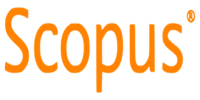EVALUATION OF LIGHT POLLUTION IN THE STREETS AND THE ROADS OF AL-NAJAF CITY, IRAQ
DOI:
https://doi.org/10.30572/2018/KJE/110305Keywords:
Light Pollution, ALAN, Light Intensity, Standard Limits, Environmental Zones, Measured SpotsAbstract
The use of night-time lighting is an irreplaceable technique in modern urban societies. On the other hand, its excessive use is accompanied by undesirable effects on humans and nature, as well as on all living beings. This has been declared in the last two decades. Nowadays, light pollution is getting increasing attention all over the world, particularly in developed countries, as most of the global researches have proven that there is a direct link between serious health problems and the increase in the levels of light intensity that people are exposed to. However, to minimize the use of exceeding lighting, some countries such as South Korea and many international organizations concerned with light pollution such as CIE (Commission Internationale de l’Eclairage) have developed specifications and determinants to minimize light pollution. Furthermore, these countries have enacted laws and legislations that regulate and limit artificial lighting use. Whereas in other countries, such as Iraq, the issue of light pollution has not given enough attention from researchers or officials and there have been no specifications that limit this widespread phenomenon. In this study, a field survey was performed that included many famous commercial and main streets as well as some external roads that link Al-Najaf city with other cities in Iraq. Moreover, this investigation included measuring the intensity of lighting in many significant squares in Al-Najaf city. This study concluded out there is clear and tangible light pollution and exceeds determinants many times in most streets and roads. In Al-Sadiq Street, for example (the main street in the old city), light pollution was 16.78 times greater than the allowable limit. This is the highest value that exceeds the standard limits for a survey of the selected streets in Al-Najaf city. As for the city squares, they were all higher than the permitted limit, whether during pre-curfew or postcurfew times. In this respect, the light pollution in “Thworat al-Ishreen Square” exceeded by 48.96 times and 233.8 times the official standard of (CIE) recommendations during the period of pre-curfew and post-curfew respectively. This indicates a lack of environmental awareness in reducing unnecessary lighting as well as the absence of legislation and laws that limit the use of lighting, mainly after midnight, and that is entirely different the way the developed countries have handled the adverse effects of light pollution.
Downloads
Downloads
Published
How to Cite
Issue
Section
License
Copyright (c) 2020 Lecturer, Hayder K. Admawi

This work is licensed under a Creative Commons Attribution 4.0 International License.













